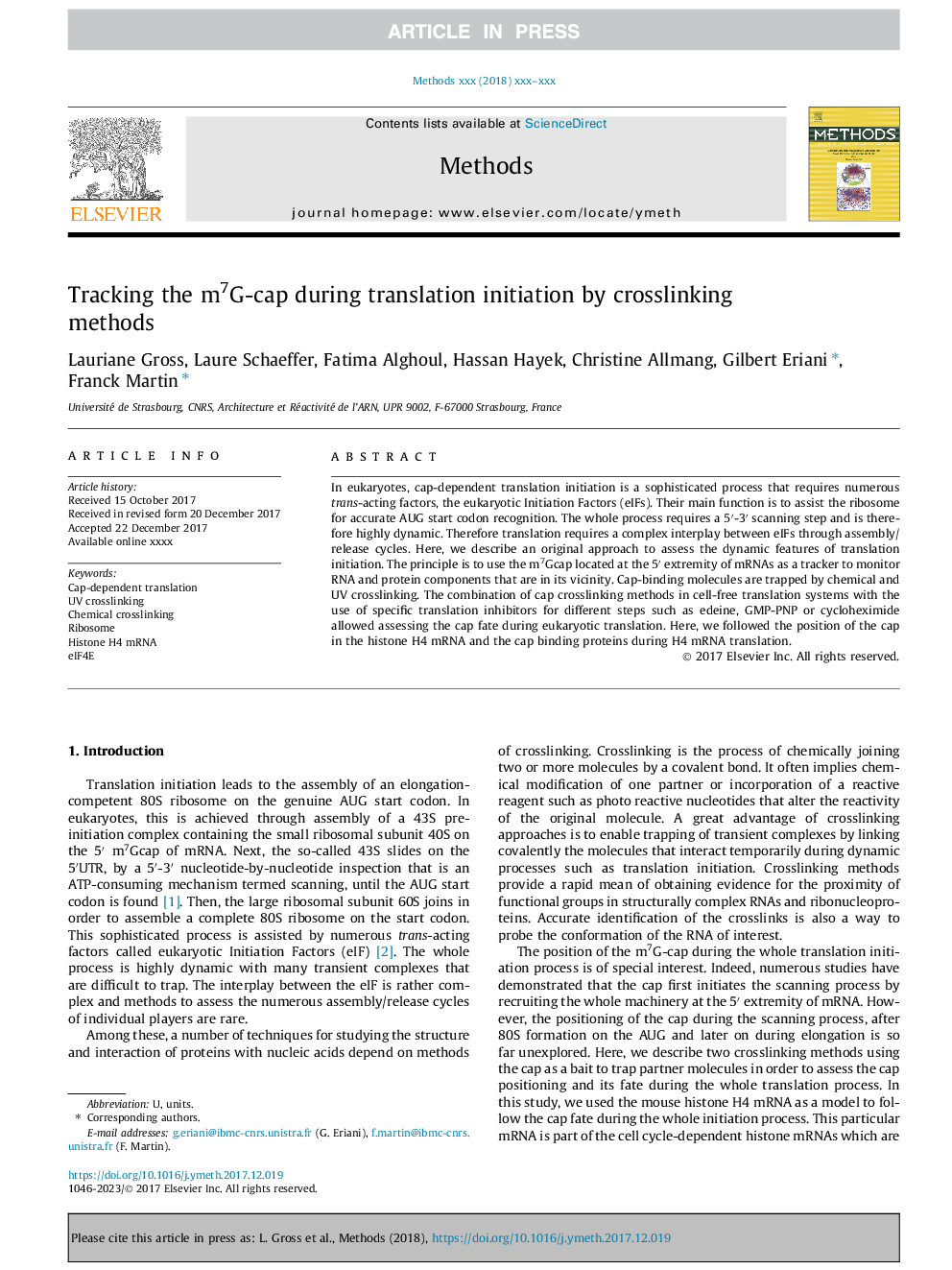| Article ID | Journal | Published Year | Pages | File Type |
|---|---|---|---|---|
| 8340083 | Methods | 2018 | 8 Pages |
Abstract
In eukaryotes, cap-dependent translation initiation is a sophisticated process that requires numerous trans-acting factors, the eukaryotic Initiation Factors (eIFs). Their main function is to assist the ribosome for accurate AUG start codon recognition. The whole process requires a 5â²-3â² scanning step and is therefore highly dynamic. Therefore translation requires a complex interplay between eIFs through assembly/release cycles. Here, we describe an original approach to assess the dynamic features of translation initiation. The principle is to use the m7Gcap located at the 5â² extremity of mRNAs as a tracker to monitor RNA and protein components that are in its vicinity. Cap-binding molecules are trapped by chemical and UV crosslinking. The combination of cap crosslinking methods in cell-free translation systems with the use of specific translation inhibitors for different steps such as edeine, GMP-PNP or cycloheximide allowed assessing the cap fate during eukaryotic translation. Here, we followed the position of the cap in the histone H4 mRNA and the cap binding proteins during H4 mRNA translation.
Related Topics
Life Sciences
Biochemistry, Genetics and Molecular Biology
Biochemistry
Authors
Lauriane Gross, Laure Schaeffer, Fatima Alghoul, Hassan Hayek, Christine Allmang, Gilbert Eriani, Franck Martin,
